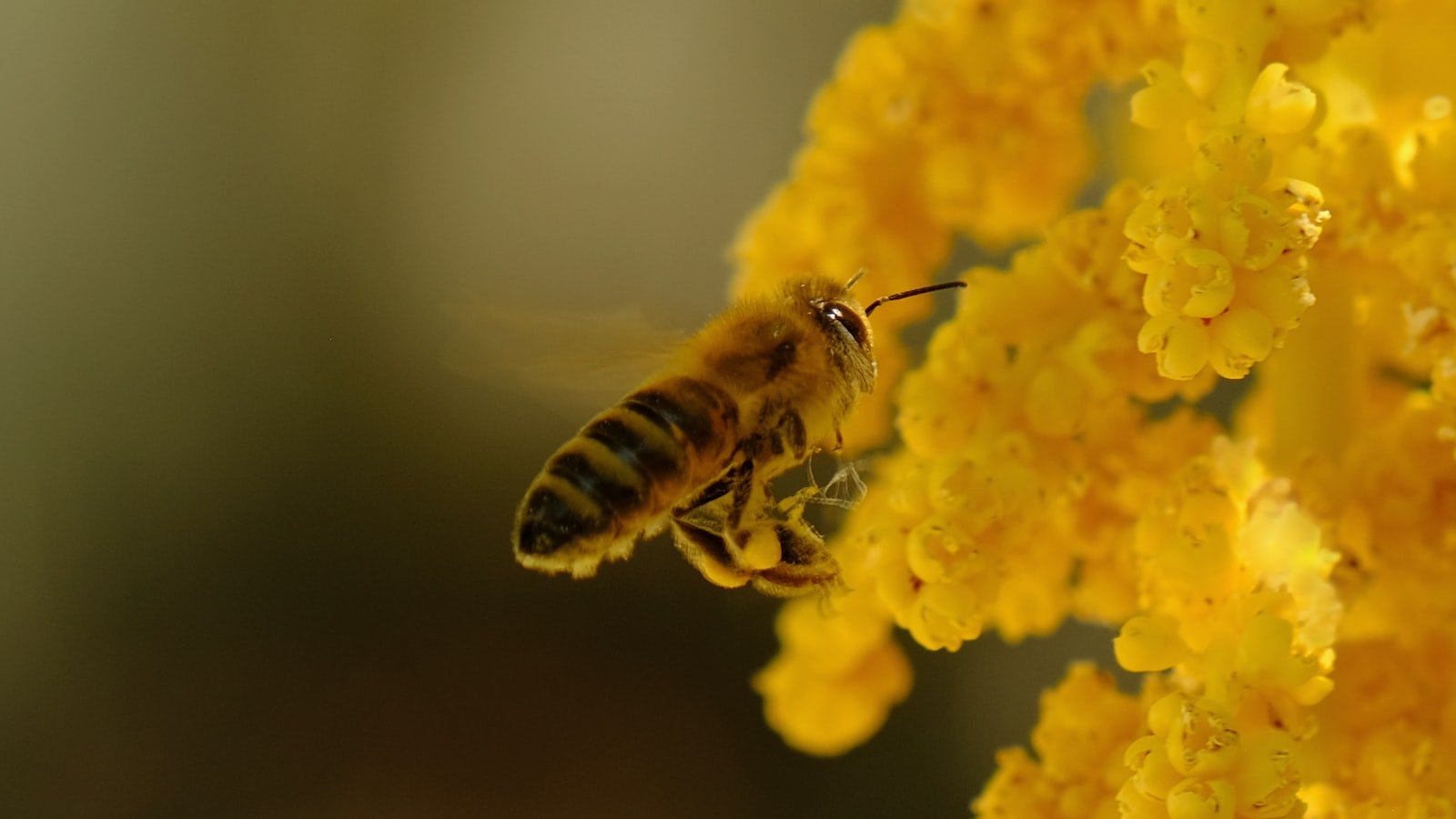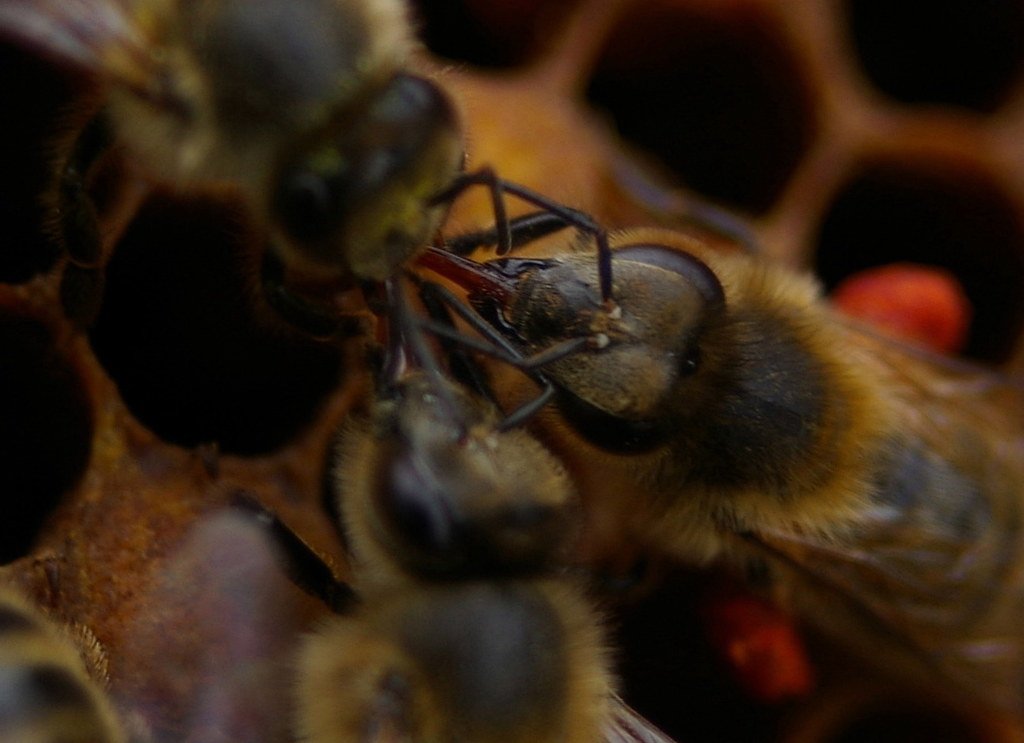In the mesmerizing world of bees, an intricate tapestry of communication weaves through vibrant meadows and bustling hives, as these tiny creatures exchange critical information in their quest for survival. While bees are renowned for their remarkable dance language, an astonishing revelation lies hidden beneath their melodious buzz – the remarkable role of communication in their thermal regulation. From deciphering temperature patterns to coordinating collective efforts, the significance of bee communication in maintaining the hive’s delicate temperature balance is nothing short of awe-inspiring. Join us as we delve into the cryptic conversations and extraordinary dances that enable these magnificent creatures to thrive in perfect harmony with their environment, unraveling the importance of their communication in the intricate symphony of thermal regulation.
Table of Contents
- The Dance Language: A Complex Communication System of Bees
- The Role of Communication in Maintaining Optimal Temperature in Bee Hives
- Understanding the Honeybee’s Vibrational Signals: Insights into Thermoregulation
- Improving Bee Communication for Efficient Thermal Regulation in Beekeeping
- Harnessing Bee Communication for Sustainable Hive Health and Productivity
- Q&A
- Key Takeaways

The Dance Language: A Complex Communication System of Bees
Within the enchanting world of bees, lies a fascinating communication system that has captivated researchers for centuries. Known as the dance language, this intricate and complex form of communication allows bees to convey crucial information about food sources, distances, and even the quality of nectar to their hive mates.
Bees communicate through a series of precise movements and gestures, each carrying a specific meaning. One of the most renowned dances is the “waggle dance,” in which a foraging bee excitedly shares the location of a rich food source. The dancer moves in a figure-eight pattern, rhythmically shaking her abdomen from side to side, signaling both direction and distance.
These dances are more than just mere movements; they are a window into the language of bees. Scientists have decoded various aspects of their dance language, including the duration of the dance, the number of waggle runs, and the angle with respect to gravity. Through careful observation and analysis, researchers have come to understand the bee’s dance language as a remarkable feat of communication, highlighting the intricate and intelligent nature of these remarkable creatures.

The Role of Communication in Maintaining Optimal Temperature in Bee Hives
Within the intricate social network of a bee hive, communication plays a vital role in ensuring a constant and optimal temperature is maintained for the well-being of the colony. These buzzing insects have developed sophisticated modes of communication that allow them to collectively regulate the hive’s temperature, offering a fascinating peek into the world of bee society.
One of the primary modes of communication employed by bees is through the use of pheromones, which are chemical signals that transmit information between individuals. When it comes to temperature control, bees release specific pheromones that alert the colony to the need for either cooling or heating the hive. These chemical signals, often released by worker bees, act as a call to action, informing the rest of the colony to adjust their behavior accordingly.
In addition to pheromones, bees also rely on physical communication cues. For instance, bees perform a mesmerizing dance known as the “waggle dance” to indicate to other members of the colony the location of a fruitful food source. However, this dance also serves another crucial purpose in regulating temperature. When the hive becomes too warm, bees will perform a modified version of the waggle dance near the entrance, signaling to their peers that ventilation is required to cool down the hive. This non-verbal form of communication allows bees to work together harmoniously to maintain an optimal temperature in their living quarters.

Understanding the Honeybee’s Vibrational Signals: Insights into Thermoregulation
Exploring the Intricacies of the Honeybee’s Vibrational Signals
Within the fascinating realm of the honeybee colony, communication takes on extraordinary forms. One such intriguing aspect is how these industrious insects employ vibrational signals not only to communicate with each other but to regulate their colony’s temperature. These unique signals provide insights into the honeybee’s thermoregulation abilities like never before.
Through meticulous research and observation, scientists have unraveled some remarkable facts about these vibrational signals. Here’s what we know:
- Distinctive Pulsating Movements: When bees engage in thermoregulation, they produce vibrations through their wings and bodies. These tremors are characterized by rhythmic, pulsating movements that are distinct from other types of communication.
- Maintaining Optimal Temperature: Through these vibrational signals, honeybees can accurately regulate the temperature within their colony. By vibrating their flight muscles, workers generate heat, while others fan their wings to help cool down the hive. This harmonious coordination ensures the survival and well-being of the entire colony.
- Changing Frequencies: Researchers have discovered that the frequency at which honeybees vibrate can vary depending on the temperature and specific needs of the colony. For instance, during the colder months, they increase their vibration frequency, raising the temperature to protect their brood.
By delving into the mysteries of the honeybee’s vibrational signals, we gain profound insights into their intricate world of thermoregulation. These extraordinary communication techniques highlight the remarkable adaptability and unity of honeybee colonies, showcasing their unparalleled evolutionary brilliance.

Improving Bee Communication for Efficient Thermal Regulation in Beekeeping
In the fast-paced world of beekeeping, efficient thermal regulation is key to maintaining healthy colonies and optimizing honey production. Bees communicate with each other through a complex system of pheromones, dances, and vibrations. However, advancements in technology have brought about new possibilities for improving bee communication and ultimately enhancing thermal regulation in beekeeping.
One innovative approach is the development of smart beehives equipped with temperature sensors and Wi-Fi connectivity. These high-tech hives provide real-time data on temperature fluctuations within the hive, allowing beekeepers to monitor and adjust conditions accordingly. By analyzing this data, beekeepers can optimize ventilation and insulation, ensuring optimal thermal conditions year-round.
Another avenue for improving bee communication lies in the realm of acoustic signaling techniques. Recent studies have shown that bees can distinguish between different types of vibrations, creating the potential for new methods of communicating temperature information within the colony. Researchers are exploring the use of specialized devices that can emit vibrations with specific frequencies to convey important messages to the bees. This novel approach holds promising implications for enhancing thermal regulation in beekeeping and ultimately improving honey production.
It is clear that the integration of technology and scientific research is paving the way for advancements in bee communication and thermal regulation in beekeeping. By embracing these innovations, beekeepers can create an environment where bees thrive and flourish, leading to more sustainable and fruitful outcomes for both the bees and the industry as a whole.
Harnessing Bee Communication for Sustainable Hive Health and Productivity
Through thousands of years of evolution, bees have perfected the art of communication within their colonies. Their sophisticated and intricate system of signals, dances, and pheromones allows them to coordinate and optimize their efforts, ultimately contributing to the overall health and productivity of the hive.
One remarkable method of bee communication is the famous “waggle dance.” When a forager bee discovers a valuable food source, it returns to the hive and performs a complex dance that conveys crucial information to its fellow workers. By incorporating various directions, durations, and intensity of movements, the forager bee effectively communicates the location, distance, and quality of the discovered food to its hive mates. This dance language enables the entire colony to efficiently gather nectar and pollen, ensuring a sustainable supply of resources.
In addition to dances, bees also utilize pheromones to transmit vital messages. Queen bees produce a pheromone called “queen substance” that signals her presence and fertility to the other bees. This chemical communication ensures the unity and productivity of the colony by suppressing the development of rival queens. Similarly, worker bees use pheromones to orchestrate critical tasks such as alarm signals, brood care, and hive defense. By decoding and understanding these chemical cues, beekeepers can intervene and support hive health whenever necessary.
By studying and harnessing the intricate communication methods of bees, scientists and beekeepers can develop innovative strategies for sustainable hive health and productivity. With the help of modern technology, beekeepers can now monitor hives remotely, analyze honeybee activity patterns, and detect abnormal behaviors that might indicate disease or stress. By continuously enhancing our understanding of bee communication, we can ensure the longevity and vitality of these fascinating pollinators and the ecosystems they support.
Q&A
Why is bee communication important in thermal regulation?
Bee communication is crucial for maintaining optimal temperature within the hive. Bees use a variety of signals, such as waggle dances and pheromones, to alert fellow hive members about the need to either cool or warm the colony. This effective communication ensures the survival and productivity of the entire bee community.
How do bees communicate about the need for cooling the hive?
When hive temperature exceeds the desired level, some forager bees will fan their wings near the entrance, creating a breeze that ventilates the hive and lowers the temperature. They also release specific pheromones that signal other bees to join in the cooling effort. This collaborative communication helps maintain a stable and comfortable environment for the hive.
What communication signals do bees use to warm the hive?
When the hive temperature drops too low, bees generate heat by contracting their flight muscles rapidly. By clustering together tightly, they can increase the temperature and ensure the survival of their colony. Bees communicate this need by releasing specific pheromones that prompt other bees to join and contribute their warmth. This coordinated communication is vital for the bee community’s thermoregulation.
Are there different communication signals for cooling and warming the hive?
While bees primarily use pheromones to communicate both cooling and warming needs, they have different pheromones and behavior patterns for each. For cooling, bees release alarm pheromones and engage in wing fanning. For warming, they emit different pheromones and form a tight cluster. These distinct communication signals ensure precise coordination within the hive.
How does the accuracy of bee communication contribute to thermal regulation?
The accuracy of bee communication plays a fundamental role in maintaining hive temperature. When bees accurately assess the need for cooling or heating, they ensure energy efficiency, prevent overheating or chilling, and protect the brood. Accurate communication allows the colony to respond promptly, ensuring the survival and well-being of the entire bee community.
What happens if bee communication about thermal regulation fails?
If bee communication fails, it can have dire consequences. An inability to effectively communicate about temperature regulation may result in challenges such as overheating, which can lead to loss of resources, stress, or even death. It can also hinder the development of the brood, affecting the overall health and productivity of the hive.
Key Takeaways
As we embark on our journey through the hidden world of bee communication in thermal regulation, we are left awe-inspired by the immense importance that lies within these tiny buzzing creatures. The intricate dance, the harmonic vibrations, and the sophisticated chemical messages exchanged among these hardworking honey-makers are not merely a means of survival, but a testament to the brilliance of nature itself.
Our journey has led us to understand that for bees, communication is the key to maintaining the delicate balance of temperature within their hives. Like a conductor guiding an orchestra, bees orchestrate a symphony of signals to ensure the warmth of their home remains optimal, even in the face of unpredictable weather patterns.
It is intriguing to unravel the secret language of bees, a language that transcends spoken words. Through their intricate dance, our winged wonders communicate the location of desirable nectar sources, allowing their fellow workers to make informed choices for the collective benefit of the hive. This astonishing communication system is a testament to the complexity and efficiency of their society, built on collaboration and cooperation.
But the significance of bee communication in thermal regulation extends beyond the confines of the hive. Bees play a crucial role in the pollination of plants, thereby contributing to the survival of countless ecosystems. By regulating their own internal temperature, they are able to navigate different climates and continue their vital task of pollination—nature’s very own ambassadors of growth and sustainability.
As we conclude our exploration into the world of bee communication in thermal regulation, we are left with a deeper appreciation for these incredible creatures. Their intricate dances, ultrasonic vibrations, and the exchange of chemical messages are a glimpse into a world that exists right under our noses. In unlocking the secrets of their communication, we are reminded of the delicate balance that nature has masterfully crafted.
Let us embrace the magnificence of bees and their communication skills as a call to protect their habitats and cultivate an environment where these incredible creatures can continue to thrive. For in doing so, we not only preserve the wonder of their intricate communication, but also safeguard the future of our planet’s delicate ecosystems.
As an affiliate, my content may feature links to products I personally use and recommend. By taking action, like subscribing or making a purchase, you’ll be supporting my work and fueling my taco cravings at the same time. Win-win, right?
Want to read more? Check out our Affiliate Disclosure page.